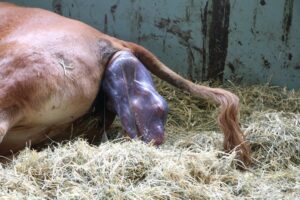The World Congress on Genetics Applied to Livestock Production (WCGALP) was opened with the presentation “Measure, predict, act; a paradigm of genetics applied to livestock production now and into the future”. This presentation summarized the whole range of tasks undertaken by livestock geneticists:

In addition to the production traits that have been recorded for decades, such as milk yield or slaughter performance, increasing amounts of data on fertility, health and growth have been recorded in recent years. This information will continue to be important for breeding value estimation. In the future however, traits that are difficult to collect, such as feed intake or methane emissions, will also be collected more frequently. In this way, breeding progress can be made for these traits. Technologies such as sensors or imaging methods (e.g. carcass scanners) help to record these traits. Such automated methods are primarily targeted towards data collection in breeding. However, one challenge of these new phenotypes will be the huge amount of data that needs to be processed efficiently.
Thanks to genomic selection, hundreds of thousands to millions of genotypes have become available in the last decade. With the constant evolution of methodology and the technological development, even today with all this data, estimated breeding values (EBVs) with genomic information can be calculated in a reasonable time.
In the future, breeders will have to pay even more attention to the development of decision support systems to ensure breeding progress or identify the risks of suboptimal performance. They can help improve EBVs by making data collection as accurate and complete as possible. The productivity and feeding of the world’s population remains very important. However, the interests of non-agricultural society must not be ignored. Otherwise, there is a risk that they will no longer understand the purpose of agriculture and thus livestock.
The geneticists at Qualitas AG have selected three topics that provide an in-depth insight into the current trends in animal breeding.
The full range of developments and applications of single-step breeding value estimation were presented at the World Congress.
Not only single genes and the choice of SNP markers were discussed, but also genomic inbreeding was again a major topic. Furthermore, possible causal variants for various traits were also presented.
The development of new traits happens mainly in the areas of functionality and environmental impact of our livestock. The most important keywords are health, fertility, feed efficiency and methane (CH4) emissions.






